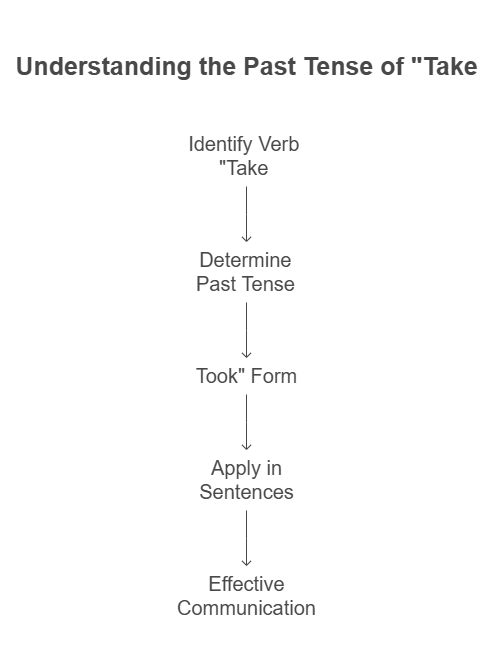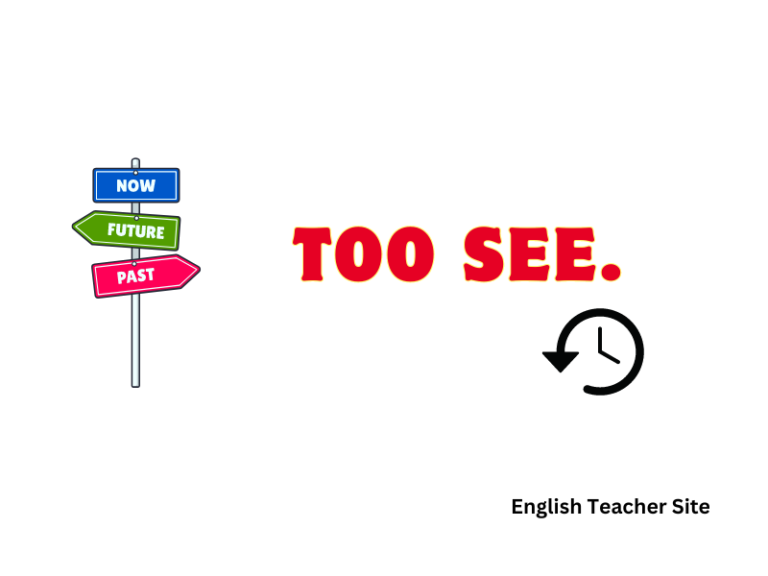Past Tense of Take: Learn It in 3 Easy Steps

Introduction: Why Understanding the Past Tense of Take Matters
Understanding the past tense of “take”—which transforms into “took”—is more than just a grammatical rule; it’s a foundational skill for clear, accurate communication. Whether you’re writing an email, telling a story, or narrating an event, using the correct past tense ensures your message is understood and that your communication sounds polished and professional.
One common pitfall is the confusion between “took” and similar-sounding verb forms. Misusing “took” or its counterparts, such as “taken” or “take,” can easily lead to misunderstandings. This guide simplifies the concept, allowing you to grasp it in a structured, straightforward way. By the end, the past tense of “take” will be second nature.
Step 1: Identifying the Past Tense of Take
The Irregular Nature of the Verb Take
Unlike regular verbs, the verb “take” follows an unpredictable pattern when conjugated into the past tense. Regular verbs tend to follow a simple rule—add “-ed” to form the past tense. However, “take” is an irregular verb, which means it changes entirely to become “took.” This deviation is not arbitrary but follows its historical evolution in the language.
The key to understanding this change is to accept that irregular verbs don’t adhere to the standard rules. Instead, they evolve through language usage, often influenced by their roots in Old English and other linguistic influences. It’s important to remember that “take” doesn’t conform to typical past tense rules, and thus it’s essential to commit the irregular form “took” to memory.
Understanding the Transformation: From Take to Took
The transformation from “take” to “took” is a classic example of irregular verb conjugation in English. It’s not about simply adding letters—it’s a shift that changes the structure of the verb entirely. By understanding this transformation, learners can avoid common pitfalls and confidently use the past tense in both spoken and written forms.
For example:
- “I take the book” (present tense)
- “I took the book” (past tense)
Notice how the verb “take” becomes “took” when describing an action completed in the past. This change is critical to forming grammatically correct sentences in the past tense.

Examples of Took in Different Contexts
Understanding how “took” functions in various contexts can further solidify its use. Consider these sentences:
- “She took a walk in the park yesterday.”
- “I took the car to the mechanic last week.”
- “They took the test with confidence.”
In each case, “took” refers to an action completed in the past. It’s essential to recognize that “took” is used regardless of whether the action was completed minutes ago, yesterday, or several years ago, as long as the event is in the past.
Step 2: Common Mistakes with the Past Tense of Take
Confusing Took with Other Verb Forms
A common error arises when learners mix up “took” with other verb forms that seem similar. One of the most frequent mistakes is confusing “took” with “take” or “taken,” which are different verb forms.
For example, it’s incorrect to say, “I have took the book.” The correct form is, “I have taken the book.” The key here is to distinguish between the past tense (“took”) and the past participle (“taken”), which is often used with auxiliary verbs like “have” or “had.”
Real-Life Examples of Mistakes and Corrections
Mistakes often happen when learners use the wrong form of the verb without realizing it. For example:
- Incorrect: “She take the book home.”
- Correct: “She took the book home.”
To avoid these kinds of mistakes, make a habit of reviewing the verb’s tense before speaking or writing. This simple review can prevent confusion in both casual conversation and formal writing.
Step 3: Using the Past Tense of Take in Sentences
How to Structure Sentences with Took
Using “took” in sentences is straightforward once the transformation from “take” is understood. The general structure involves placing “took” after the subject, followed by the object or action it pertains to.
For example:
- “He took the last piece of cake.”
- “They took their time deciding.”
Notice that “took” remains consistent regardless of the subject. It’s used to describe a specific, completed action in the past. The key is to pair it with the correct subject and object, maintaining sentence structure and clarity.
Practice Exercises to Solidify Your Understanding
To truly master the past tense of “take,” practice is essential. Here are a few exercises to help reinforce your understanding:
- Write five sentences using “took” in various contexts.
- Fill in the blanks with the correct form of “take” in the past tense:
“I ________ a walk around the block yesterday.” - Convert present tense sentences into the past tense using “took.”
These exercises can help solidify your understanding and build confidence in using “took” in everyday communication.
Visual Aids and Mnemonic Devices to Remember Took
Memory plays a crucial role in mastering verb forms, and visual aids or mnemonic devices can be incredibly helpful. For instance, imagine a picture of someone taking a book and immediately transforming the verb into “took” as the action is completed. Visualizing the transition helps reinforce the irregular form.
Conclusion: Becoming Confident with the Past Tense of Take
By following these three easy steps, you can confidently use “took” in sentences and improve your English fluency. Regular practice, alongside understanding the transformation from “take” to “took,” will ensure this grammatical concept becomes second nature. Keep reviewing, practicing, and challenging yourself with new exercises to solidify your skills.
Share your progress in the comments and continue learning. With time, mastering irregular verbs will no longer feel like a challenge but a natural part of your language development.
Source
Harper, Douglas. “Etymology of take.” Online Etymology Dictionary.
My name is Khamis Maiouf. I am the creator of the English Teacher Site, dedicated to providing valuable resources and insights for students around the world. With a passion for education and a commitment to helping students enhance their skills, I aim to make English teaching more effective and enjoyable for both educators and students.






